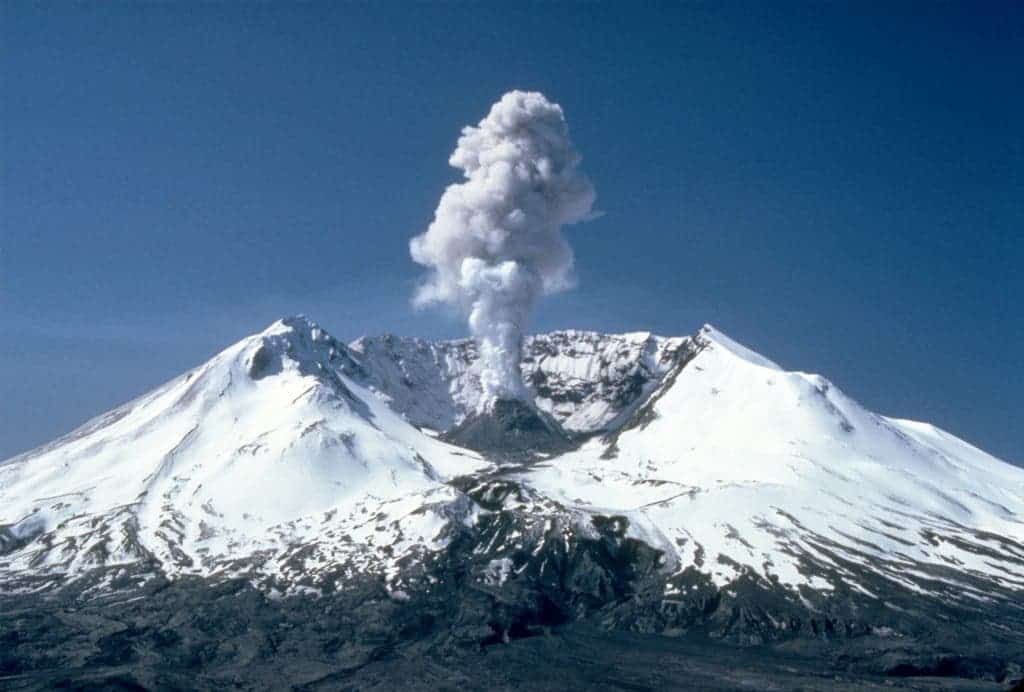On May 18, 1980 Mount St. Helens erupted with terrifying force, the violence of the explosion destroying the upper part of the mountain. The event claimed the lives of 57 people and severely damaged the homes and infrastructure in the area. Since then, a $3 million study has been commissioned on the volcano to study its internal workings in the hope that a future eruption can be detected in time to prevent such a tragic event from happening again.

Image via wikipedia
The findings reveal that there’s a real danger that the volcano possibly erupting again — geologists identified an enormous second chamber, buried between 7 to 23 miles (11-37 km) deep under the surface. The reservoir is connected to a smaller chamber that rests directly beneath the volcano.
This connection, correlated with seismic data from the site, is helping them piece together what happened prior to the 1980 eruption, the deadliest in recorded U.S. history.
In the months leading to the explosion, geologists recorded a series of tremors. They were puzzled at the time, but with the benefit of new data they concluded that magma pumping between the two chambers caused pressure to increase in the upper reservoir. As the structures around it adjusted to the increased pressure, the tremors were a way for the rocks to release lithological stresses. They couldn’t adjust fast enough and compress enough however, so the pressure built up gradually and resulted in the deadly explosion.
“We can only now understand that those earthquakes are connecting those magma reservoirs,” said Eric Kiser, seismologist at Rice University. “They could be an indication that you have migration of fluid between the two bodies.”
And now, more tremors have been registered in the area, the team reported at the annual meeting of the Geological Society of America in Baltimore, Maryland on Nov. 3rd. This suggests that fresh magma is being injected upwards into the volcanic structure, hinting at a new eruption.
“A cluster of low frequency events, typically associated with injection of magma, occurs at the northwestern boundary of this low Vp column,” the researchers reported. “Much of the recorded seismicity between the shallow high Vp/Vs body and deep low Vp column took place in the months preceding and hours following the May 18, 1980 eruption. This may indicate a transient migration of magma between these two reservoirs associated with this eruption.”
The Vp/Vs is the ratio of compressional and shear wave velocity, i.e. how fast the two main types of seismic waves travel through a structure. This can be processed and reveals information about rock composition, underground structures, shapes and many other geological characteristics.
After the 1980 eruption, Mount St. Helens started to erupt again in 2004 and released magma through gradual extrusion [i.e. non-explosive release of magma] up to 2008. Despite this, the Mount is considered to be a high risk volcano, under close observation by the U.S. Geological Survey.
The researchers said that their findings could offer a crucial early warning system of a potential eruption.






